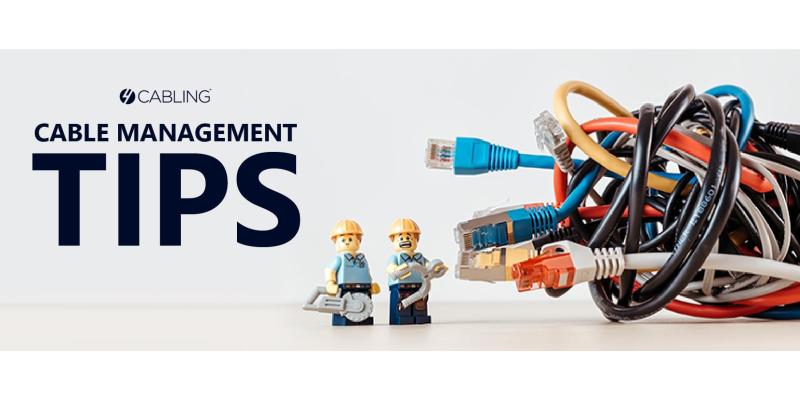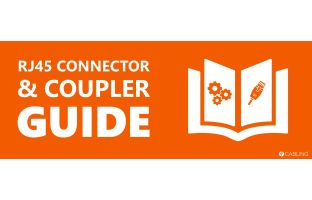Cable Management Tips and Mistakes to Avoid
If you’ve ever moved offices or renovated, chances are you’ve been forced to deal with the time consuming task of untangling a tumbleweed of wires that are all indistinguishable from one another.
Cable management describes the best practices to take on board when setting up your cable systems. The benefits of cable management are more than just visual. Effective cable management ensures safety and ensures that your cables are easily accessible, identifiable and are safe from damages.
Have you been tasked with the challenge of setting up or reorganising your cable management system? Here are some of the best cable management tips and tricks to consider when setting up your new system to protect your network cables in the long run.
Plan for the future
It’s more cost effective to plan for tomorrow’s system than today’s. If you think it is likely that you will be adding to your cable management system, then ensure that you put in place a system that allows for easy upgrades or additional pieces. Don’t buy a cable tray if you feel that it will need to be replaced sometime in the future. Instead, one of the best ways to cable manage is to invest in cable management tools that will easily adapt to your growing cable collection.
Use the right cable tray
There are various types of cable trays on the market. When deciding on the tray for your needs, it’s important to take into account your current situation and environment. What is the combined weight of the cables in your setup? Are they highly sensitive?
Cable trays are designed to support and protect your cables, providing homes and offices with irreplaceable cable management help. The vast majority of cable trays are open in design to ensure heat dissipation and ease of access. This is a safer option to cable boxes, which can be prone to overheating and can pose a fire hazard.
Two of the most common trays are:
Ladder cable trays: This is the most common type of cable tray used for projects. These trays resemble a metal ladder with two side rails that are joined together by a series of rungs. The rungs anchor the cables and hold them in their intended position. As they do not have a cover, they allow for the free flow of air through the cables.
Solid bottom cable tray: This type of cable tray is best used for sensitive cables that require EMI/ RFI shielding protection. As its name implies, this tray has a solid bottom that provides a sufficient amount of protection. To allow for air flow, there should still be ventilation within this tray.
Outside of the type of tray, one of the most important tips on cable management is to consider the material used. Trays can come in aluminium, steel, stainless steel or fibreglass. All of these materials are strong, but the question as to which one is best for your system will depend on their ability to withstand high temperatures. As fibreglass is non-metallic, fibreglass trays are noticeably less effective when it comes to dealing with high temperatures. Before choosing your cable tray, it’s always recommended to confirm the continuous temperature rating for your cables to ensure that you pick the right material.
Use high quality cable management products
Cheap and flimsy cable management products will not support your system for long periods of time. Cheaper products have a range of limitations that can pose a risk of damaging your cables. To avoid replacing your tools (and cables) unnecessarily, it’s best to invest in high quality commercial-grade cable management products from the get go. Plastic should be avoided as it will be more prone to damage in comparison to sturdier materials, such as stainless steel.
Calculate a proper fill ratio for the cable tray you are using
There are a series of critical rules that must be followed when selecting and maintaining your cable tray.
Perhaps one of the most crucial cable management tips is that cable trays must remain at no higher than 80% capacity. This means that it’s recommended to purchase a cable tray that will remain at a much lower capacity than 80% to allow for upgrades and additions. Overfilling can contribute to a greater risk of EMI.
Separate cables must also be kept apart with separators and shelves. Confirm cables that could cause interference with each other are stored in separate compartments such as power and data. Additionally, don’t keep cables with incompatible jackets beside one another.
Other important things to note when setting up your cable tray include:
- Ensure weight is evenly distributed across the tray
- Allow for proper strain relief
Secure properly
It is important to properly install your cables to ensure that they are safely positioned. Incorrectly installed cable trays and equipment can be at a higher risk of collapsing, which can not only damage the cables within, but also pose a safety hazard.
The method of installing a cable management system will depend on the type of cable tray you are using and where you intend to position the setup. If you are installing a larger cable management system, hold down clamps are generally used in pairs to secure trays to a strut or channel.
Looking for more cable management tips and tricks? Get in contact!
Interested in getting started on improving your cable management system? Our customer service team is always available to help you organise the cable management system necessary for your workspace or home. Get in touch with us today to find out more about our offerings and how you can transform your cable management system into one that is safe and functional.






